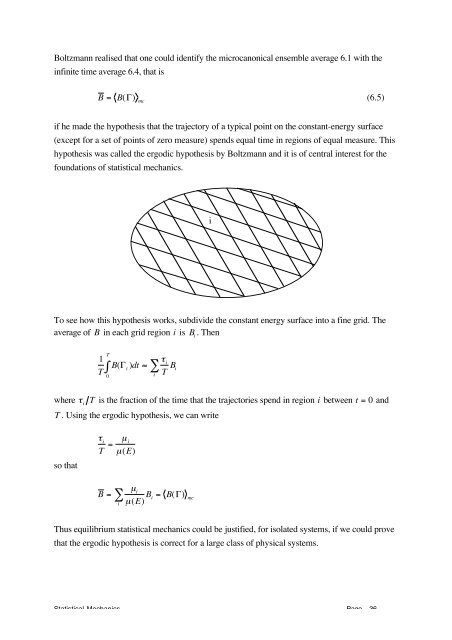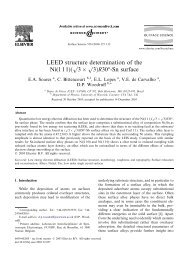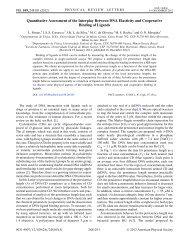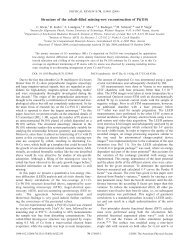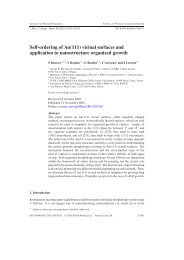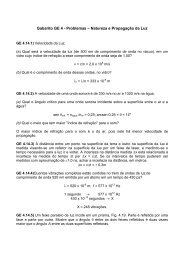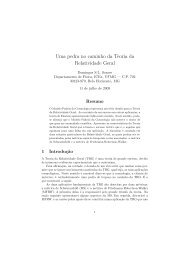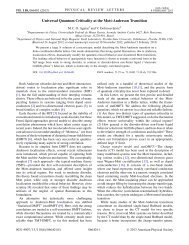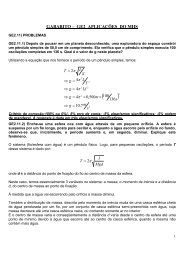Fundamental Statistical Mechanics
Fundamental Statistical Mechanics
Fundamental Statistical Mechanics
Create successful ePaper yourself
Turn your PDF publications into a flip-book with our unique Google optimized e-Paper software.
Boltzmann realised that one could identify the microcanonical ensemble average 6.1 with the<br />
infinite time average 6.4, that is<br />
B = B(Γ) mc<br />
<strong>Statistical</strong> <strong>Mechanics</strong> Page 36<br />
(6.5)<br />
if he made the hypothesis that the trajectory of a typical point on the constant-energy surface<br />
(except for a set of points of zero measure) spends equal time in regions of equal measure. This<br />
hypothesis was called the ergodic hypothesis by Boltzmann and it is of central interest for the<br />
foundations of statistical mechanics.<br />
i<br />
To see how this hypothesis works, subdivide the constant energy surface into a fine grid. The<br />
average of B in each grid region i is B i . Then<br />
T<br />
1<br />
T B(Γ t )dt ∫ ≈<br />
0<br />
∑<br />
i<br />
τ i<br />
T B i<br />
where τi T is the fraction of the time that the trajectories spend in region i between t = 0 and<br />
T . Using the ergodic hypothesis, we can write<br />
so that<br />
τ i<br />
T = µ i<br />
µ(E)<br />
B =<br />
∑<br />
i<br />
µ i<br />
µ(E) Bi = B(Γ) mc<br />
Thus equilibrium statistical mechanics could be justified, for isolated systems, if we could prove<br />
that the ergodic hypothesis is correct for a large class of physical systems.


